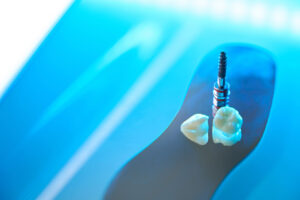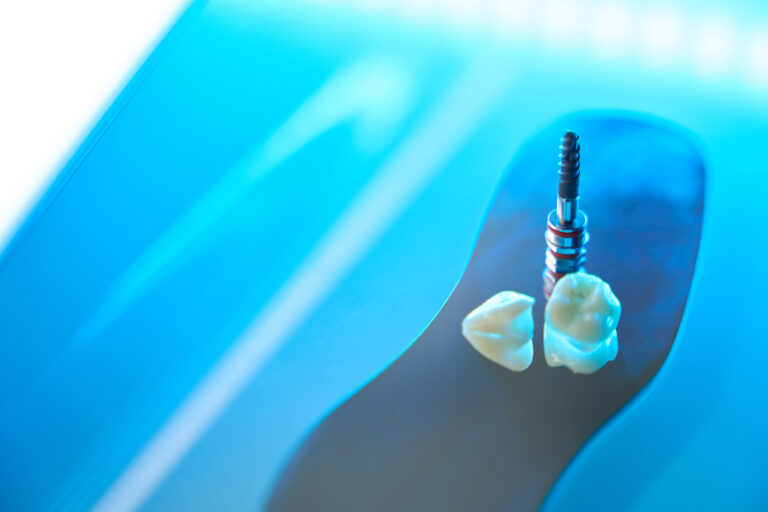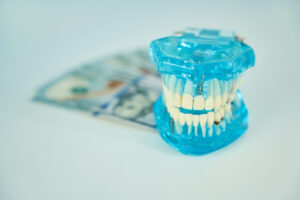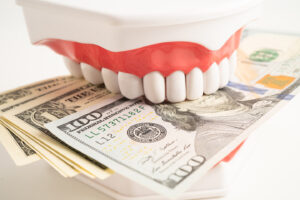Zirconia dental implants offer a metal-free solution that combines natural aesthetics, high strength, and exceptional biocompatibility for long-term tooth replacement. Patients often worry about gray lines, allergic reactions, or corrosion under the gum line—zirconia implants address these concerns while supporting healthy bone integration. In this article, Dr. Kaplansky explores the science behind zirconium dioxide, compares ceramic implants to traditional titanium options, outlines candidacy criteria, reviews his streamlined treatment process, examines local costs and financing in Gasport, Lockport, and Buffalo, NY, and explains care practices to ensure lasting success. As part of his comprehensivedental implant services, Dr. Kaplansky guides you through every step toward a confident, metal-free smile.
What Are Zirconia Dental Implants?
Zirconia dental implants are tooth roots manufactured from zirconium dioxide, a white ceramic material that integrates with bone to replace missing teeth without metal components. This bioinert implant surface encourages osseointegration—bone bonding to implant—while eliminating potential metal sensitivities. Understanding the material and design variations sets the stage for evaluating their benefits and applications in restorative dentistry.
What is Zirconium Dioxide and Why Is It Used in Implants?
Zirconium dioxide is a high-purity ceramic known for its fracture resistance, hardness, and chemical stability, making it ideal for implant fixtures and abutments. It resists low-temperature degradation, avoiding corrosion and ion release in the mouth.
- High flexural strength(900–1,200 MPa) that withstands chewing forces
- White colorthat mimics natural tooth enamel
- Bioinert surfaceminimizing tissue irritation
Zirconia Properties and Applications
Zirconium dioxide, a high-purity ceramic, is known for its fracture resistance, hardness, and chemical stability, making it suitable for dental implants. Its white color mimics natural teeth, and its bioinert surface minimizes tissue irritation, leading to aesthetic and health advantages in implant therapy.
- Fischer, “Zirconia in Dental Implants,” Journal of Prosthetic Dentistry (2010)
This research supports the article’s claims about the material properties and benefits of zirconia implants.
These characteristics lead directly to aesthetic and health advantages in implant therapy, preparing us to compare zirconia with titanium implants.
How Do Zirconia Implants Differ from Traditional Titanium Implants?
Unlike titanium implants, zirconia implants offer a one-piece, white ceramic structure that avoids metal exposure while maintaining osseointegration through a hydrophilic, bioinert surface. Zirconia’s low thermal conductivity reduces sensitivity to temperature changes. In contrast, titanium requires a separate abutment connection and can display grayness at the gum line. This ceramic alternative supports patients seeking metal-free dentistry and superior cosmetic outcomes.
What Types of Zirconia Implants Are Available?
Zirconia implants come in one-piece and two-piece designs, each stabilized with yttria to enhance toughness and allow prosthetic flexibility.
Implant Type | Design Feature | Clinical Value |
One-piece | Fixture and abutment fused | Eliminates microgap, reduces bacterial ingress |
Two-piece | Separate abutment interface | Allows angulation correction and multiple restorations |
Y-TZP Zirconia | Yttria-stabilized form | Higher fracture resistance and aging stability |
One-piece options simplify placement but limit angle adjustment, while two-piece systems offer customization at the cost of more clinical steps. These variations inform benefit analysis in the next section.
What Are the Key Benefits of Zirconia Dental Implants?
Zirconia implants combine cosmetic and health-related advantages that support both patient satisfaction and clinical outcomes. Their unique material properties translate into specific benefits for aesthetics, tissue compatibility, hygiene, and durability.
How Do Zirconia Implants Provide Aesthetic Advantages?
Zirconia dental implants deliver superior aesthetics by matching natural tooth color and eliminating dark metal margins that can show through the gum line.
Primary aesthetic benefits include:
- Natural shade continuitywith adjacent teeth
- No gray halounder thin gingival biotypes
- Translucencythat mimics enamel light transmission
These visual advantages help patients achieve seamless restorations, paving the way to discuss tissue compatibility next.
Why Are Zirconia Implants Considered Biocompatible and Metal-Free?
Zirconia implants are inherently bioinert and hypoallergenic, making them safe for patients with metal sensitivities while resisting corrosion in the oral environment.
- Hypoallergenic naturepreventing allergic reactions
- Corrosion resistancethat avoids ion leaching
- Low bacterial adhesiondue to smooth ceramic surface
This metal-free advantage supports healthier soft tissues and lower inflammation risk, leading directly to their oral-health benefits.
How Do Zirconia Implants Promote Better Oral Health?
Smooth zirconia surfaces reduce bacterial adhesion and plaque accumulation, supporting healthier gum tissue and lowering the risk of peri-implantitis.
- Reduced biofilm formationon abutment surfaces
- Enhanced tissue sealaround implant neck
- Simplified cleaningwith non-abrasive tools
Minimizing bacterial colonization fosters long-term tissue stability, which complements their robust strength profile.
What Makes Zirconia Implants Strong and Durable?
Yttria-stabilized zirconia exhibits high fracture toughness and wear resistance, ensuring long-term durability comparable to titanium under normal chewing loads.
- High Mohs hardnessresisting surface wear
- Fracture toughness(4–6 MPa·m½) for crack suppression
- Long-term color stabilityavoiding discoloration
This combination of strength and stability underpins their performance, leading us into a direct comparison with titanium implants.
How Do Zirconia Dental Implants Compare to Titanium Implants?
Comparing zirconia and titanium implants clarifies material-based advantages, success metrics, and cost-effectiveness, guiding patient choices based on clinical needs and budget.
What Are the Material and Design Differences Between Zirconia and Titanium?
Zirconia’s ceramic nature contrasts with titanium’s metallic alloy, affecting color, surface chemistry, and design flexibility.
Entity | Attribute | Zirconia Value | Titanium Value |
Material | Composition | Zirconium dioxide (ceramic) | Ti-6Al-4V alloy |
Color | Appearance | White, enamel-like | Silver-gray |
Surface Chemistry | Bioactivity | Bioinert, hydrophilic | Bioactive oxide layer |
Connection | Prosthetic Design | One-piece or two-piece | Multi-component interfaces |
Thermal Conductivity | Temperature Sensitivity | Low, patient comfort | High, potential sensitivity |
How Do Success Rates and Longevity Compare?
Clinical studies report zirconia implants maintain a 95–99% survival rate over ten years, closely matching titanium implants while offering the added benefit of a metal-free surface.
Zirconia Implant Success Rates
Clinical studies indicate that zirconia implants maintain a high survival rate, often comparable to titanium implants. These studies demonstrate stable osseointegration, which is crucial for the long-term success of dental implants.
- Schlee, “Long-Term Outcomes of Zirconia Implants,” International Journal of Oral & Maxillofacial Implants (2018)
This citation provides evidence for the success rates and longevity of zirconia implants, as discussed in the article.
Both materials demonstrate stable osseointegration, though long-term zirconia data for two-piece systems remain emerging. This parity in longevity assures patients that ceramic implants deliver comparable reliability.
What Are the Cost Differences Between Zirconia and Titanium Implants?
Zirconia implants typically range from $2,000 to $4,500 per tooth, reflecting higher material and manufacturing costs compared to titanium implants, which average $1,500 to $3,000 per tooth. Regional factors and case complexity affect overall investment:
- Material and milling costsare higher for ceramic components
- Specialized trainingadds to clinical fees
- Full-arch caseswith zirconia frameworks often start around $25,000
Understanding cost differences guides patients into candidacy considerations.
Who Are the Best Candidates for Zirconia Dental Implants?
Selecting the ideal patient profile ensures predictable outcomes and maximizes benefits unique to ceramic implant therapy.
What Conditions Make Zirconia Implants Ideal?
Patients with metal allergies, thin gum biotypes requiring high aesthetics, or those pursuing holistic dental care often choose zirconia implants for their biocompatibility and natural appearance.
- Documented metal sensitivitiesor allergy concerns
- Anterior restorationswhere gum-line aesthetics are critical
- Preference for metal-free, holistic materials
These criteria help tailor implant choices, leading into contraindications.
What Are the Considerations and Contraindications for Zirconia Implants?
Despite their benefits, zirconia implants may not suit patients with limited bone volume or those requiring extensive multi-unit prosthetics, especially in two-piece designs with less long-term data.
- Bone density requirementsmay exceed those for titanium
- Two-piece design datastill evolving beyond five years
- Angulation flexibilityless than metal systems
Recognizing these limitations ensures safe, predictable treatment planning.
What Is the Zirconia Dental Implant Procedure at Dr. Kaplansky’s Practice?
Dr. Kaplansky’s practice combines advanced imaging and guided surgery for precise, patient-centered zirconia implant placement and restoration.
What Happens During the Initial Consultation and Assessment?
During the initial consultation, Dr. Kaplansky evaluates bone density, gum health, and esthetic goals through 3D CBCT imaging and digital smile design to plan a personalized zirconia implant treatment.
- Medical and dental history review
- Digital imaging of jaw anatomy
- Wax-up or virtual simulation of final smile
How Are Zirconia Implants Placed and Integrated?
Zirconia implants are inserted precisely into the jawbone using guided surgery templates, and osseointegration typically completes within three to five months as bone bonds to the ceramic surface.
- Flapless or minimal-flap incisionfor tissue preservation
- Guided pilot drillingfor optimal implant angulation
- Fixture insertionwith torque control
- Healing periodmonitored with follow-up imaging
This protocol ensures stable integration before final prosthetic attachment.
How Is the Restoration Completed with Custom Crowns?
After osseointegration, custom zirconia or porcelain-fused-to-zirconia crowns are fabricated using digital scans and shade matching to adjacent teeth, providing a seamless and durable final restoration.
- Digital impression and shade selection
- CAD/CAM milling of crown
- Try-in and esthetic verification
- Final cementation or screw-retention
The result is a natural-looking tooth replacement that supports function and beauty.
What Are the Costs and Financing Options for Zirconia Dental Implants in Gasport, Lockport, and Buffalo, NY?
Understanding regional pricing and flexible payment plans helps patients invest confidently in a metal-free smile at Dr. Kaplansky’s local practice.
How Much Do Single and Full-Arch Zirconia Implants Cost Locally?
In Gasport, Lockport, and Buffalo, NY, single zirconia implants range from $2,200 to $4,000, while full-arch restorations start around $25,000 to $45,000, depending on bone grafting and prosthetic design. Regional anesthesia, guided surgery fees, and lab costs factor into the total investment. Patients receive a detailed estimate during consultation.
What Financing or Payment Plans Are Available?
Flexible financing options, including low-interest monthly plans and third-party healthcare loans, allow patients to manage zirconia implant costs over time.
- In-office monthly plans with 0% interest
- Third-party healthcare financing up to 60 months
- Insurance predetermination for partial coverage
How Do Local Testimonials Reflect Value and Satisfaction?
Local patients frequently praise zirconia implant outcomes for natural appearance and comfort, citing transformative results and professional care at Dr. Kaplansky’s office.
- “My new teeth look completely natural.”
- “No metal sensitivity and easy maintenance.”
- “Dr. K’s team made financing seamless.”
How Should Patients Care for and Maintain Zirconia Dental Implants?
Proper aftercare maximizes implant lifespan, maintains tissue health, and ensures continued patient satisfaction.
What Are the Recommended Maintenance Practices?
Daily gentle brushing with non-abrasive toothpaste, flossing around implants, and biannual check-ups ensure long-lasting health of zirconia implants.
Key maintenance steps:
- Soft-bristle brushingat least twice daily
- Interdental cleaningwith implant-safe floss or brushes
- Professional prophylaxisevery six months
What Are Common Complications and How Are They Addressed?
Potential issues such as minor irritation or rare ceramic chipping are managed through soft tissue maintenance and occasional crown replacement under Dr. Kaplansky’s supervision.
- Soft-tissue laser therapyfor irritation
- Polishing and prophylaxisfor surface roughness
- Crown repair or remakefor chipping
How Long Do Zirconia Implants Typically Last?
Well-maintained zirconia implants can last 15 to 20 years or longer, with survival rates exceeding 90% at 10 years in clinical studies. Regular follow-up care and patient hygiene are key factors in achieving this longevity.
Long-term performance factors:
- Quality of osseointegration
- Gum tissue stability
- Patient oral hygiene habits
Dr. Kaplansky’s advanced zirconia implant solutions combine scientific innovation, personalized care, and aesthetic excellence. Patients in Gasport, Lockport, and Buffalo, NY can trust his expertise to deliver metal-free, long-lasting smiles. Schedule your consultation today to discover if zirconia dental implants are right for you and take the first step toward a confident, natural-looking restoration.








